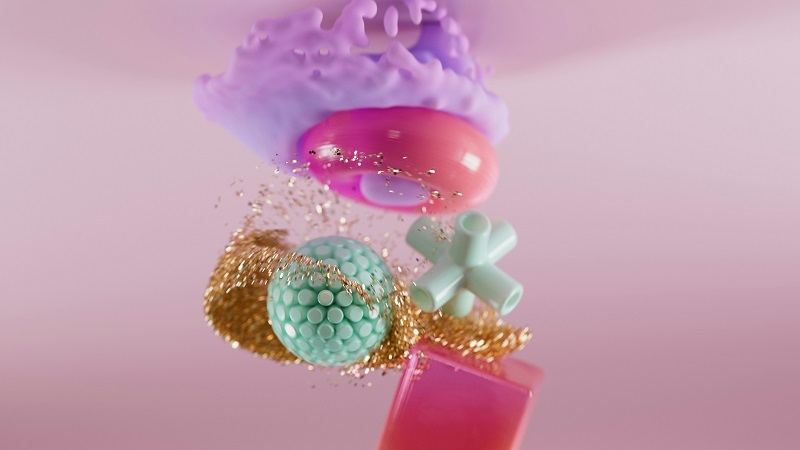Extracellular vesicles (EVs), including microvesicles, have garnered significant attention in recent years due to their potential as therapeutic agents and diagnostic biomarkers. However, the instability of these vesicles poses a major challenge to their translation into clinical applications. Lyophilization, or freeze-drying, has emerged as a promising strategy for preserving EVs, enhancing their storage and transportability. This article will explore the latest research on lyophilized microvesicles, shedding light on the mechanisms, advantages, and challenges of this approach.
Microvesicles are a type of extracellular vesicles (EVs) that are derived by cell membrane blebbing with a diameter from 100 nm to 1000 nm. While exosomes are smaller with a diameter between 30-160 nm and released by cell exocytosis. Microvesicles involve in intercellular cross-talk and can transport molecules such as mRNA, miRNA, lipids and proteins between cells, which make microvesicle play an important role in disease diagnosis. Due to its molecular transfer function, circulating microvesicles may be useful for the delivery of drugs to specific target cells. HQExo™ microvesicles isolated from cancer cell lines could use as positive controls for ELISA, FACS, WB. It has been reported that microvesicle express CD40, selectins, integrins, and cytoskeletal proteins, and their membranes are highly enriched in cholesterol, phosphatidylserine, and diacylglycerol.
The Challenge of EV Instability
EVs are naturally fragile structures that readily aggregate and degrade when stored in solution, even at low temperatures. This instability limits their shelf life and hinders their use in clinical settings. Moreover, the cold chain requirements for storing EVs can be logistically challenging and costly. Therefore, a robust method for preserving EVs is urgently needed to fully harness their therapeutic and diagnostic potential.
Lyophilization: A Solution to EV Instability?
Lyophilization has been explored as a potential solution to EV instability. This process involves freezing the EV sample and then removing the water content through a vacuum, leaving behind a dry powder that can be stored at room temperature. Lyophilization offers several advantages over traditional storage methods. It eliminates the need for cold storage, making EV transport and storage much more convenient. Additionally, lyophilization can enhance the long-term stability of EVs, preserving their structure and function for extended periods.
Mechanisms of EV Lyophilization
The lyophilization process involves complex mechanisms that can impact EV stability. During freezing, ice crystals form that can disrupt the delicate membranes of EVs, leading to aggregation and degradation. To mitigate this, cryoprotectants such as sugars and polymers are often added to the EV sample. These agents form a glassy matrix that protects the EVs from ice crystal damage. Additionally, the lyophilization conditions, including the freezing rate and drying temperature, can significantly impact EV stability.
Recent Advances in EV Lyophilization
Several recent studies have made significant strides in optimizing EV lyophilization. For example, researchers have identified optimal cryoprotectant formulations and lyophilization conditions that enhance EV stability. These advances have enabled the production of lyophilized EVs that retain their native structure and function. Importantly, these lyophilized EVs have shown promising therapeutic activity in preclinical models, suggesting their potential for clinical translation.
Challenges and Future Directions
While lyophilization holds great promise for EV preservation, several challenges remain. The lyophilization process can still cause some degree of EV aggregation and degradation, which can impact their therapeutic efficacy. Additionally, the reconstitution of lyophilized EVs requires careful optimization to preserve their structure and function. Further research is needed to refine the lyophilization process and address these challenges.
Conclusion
Lyophilized microvesicles represent a promising avenue in biomedical research, offering a potential solution to the challenge of EV instability. While significant advances have been made in EV lyophilization, further research is needed to fully optimize this approach. As the field continues to evolve, lyophilized microvesicles may emerge as a powerful tool for the diagnosis and treatment of a wide range of diseases.
About the Author
Collected by Creative Biostructure, a biotechnology company that provides exosome products derived from different sources, which have diverse applications in exosome-based research, reflecting the functional status of their parent cells. Lyophilized microvesicles at Creative Biostructure include: HQExo™ Microvesicles-A549, HQExo™ Microvesicles-B16F10, HQExo™ Microvesicles-BLCL, HQExo™ Microvesicles-BPH-1, HQExo™ Microvesicles-COLO1…
Creative Biostructure is specialized in providing cost-effective contract services to both academia and biotech/pharmaceutical industries in the field of structural biology and membrane protein technologies.
We have developed all-in-one, gene-to-structure pipelines for the structure determination of macromolecules of your interest. With a team of experienced professionals, Creative Biostructure is able to solve the structure of many challenging proteins including GPCRs, ion channels, transporters, enzymes and viral targets. We also provide a comprehensive list of products and other related services to facilitate your research in structural biology.
